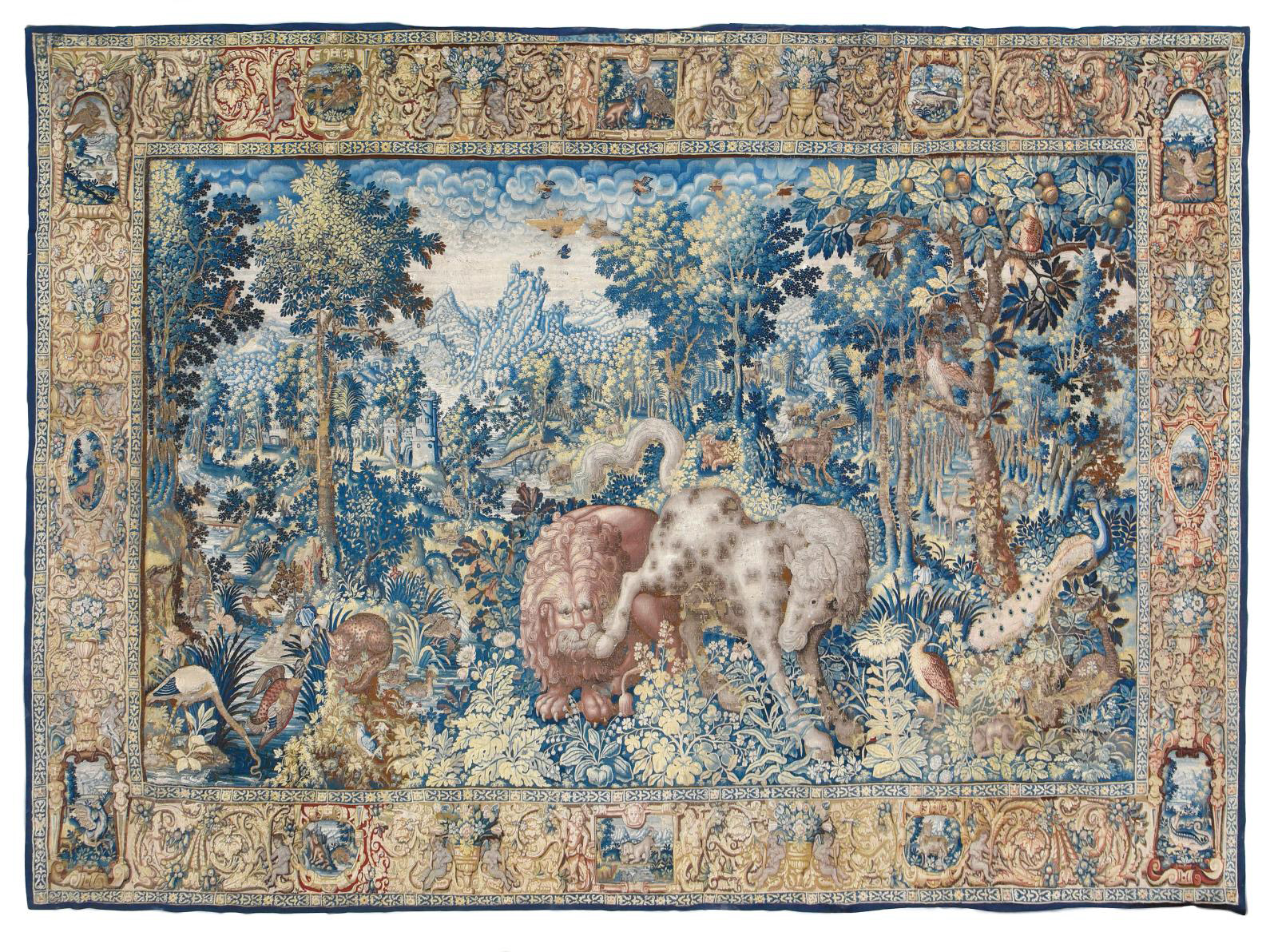by Marielle Brie

Flanders, c. 1600. Attributed to the workshop of Jan Raes in Enghien, "Pugnae Ferarum" tapestry in silk, wool and silver thread, featuring a fight between a horse and a lion, 342 x 507 cm/11.2 x 16.6 ft. Paris, Tuesday 19 January 2021. Coutau-Bégarie auction house. Mr. Kassapian. Result: €90,160
In the 11th century, a few weavers who had moved to Limoges and Poitiers, enamored of the "biaus tapiz" (beautiful carpets) brought back from the East by the Crusaders, worked on perfecting the "high warp" technique. This involved a vertical loom with two layers of warp threads, which were always wool. At their looms, the craftsmen crossed and intertwined the layers of colored warp and weft threads. This weaving formed the decoration, where the warp threads disappeared beneath the weft. The precision enabled by the high warp technique quickly made its name. As the "right" side could be seen during weaving, any errors could be corrected—an advantage not provided by the low warp method with its horizontal loom. Referring to his cartoon, the weaver could thus work and rework the piece until he obtained a result faithful to the model. This reverse method of working meant that for a long time tapestries appeared as mirror images of their cartoons, before artists adapted their work to this particular feature of weaving.
Up until the Hundred Years War (1337-1453), high-quality, steady production made the fortune of workshops in Paris and Arras, though few works have come down to us. These survivors include the Apocalypse Tapestry (housed in the Tapestry Museum in the Chateau of Angers), consisting of six pieces with an initial area of 850 square meters (9,149 square feet): the largest known today. Click here to learn more!




